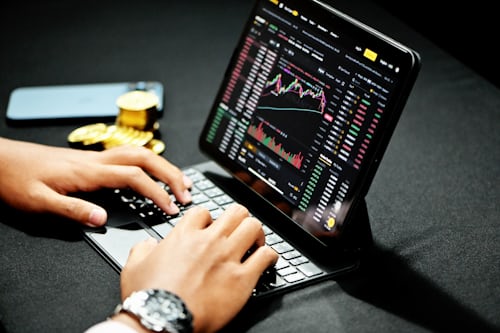This is the case, for example, when a simple market order is executed at a better price than the one displayed. This is also determined by the broker's execution model: If this does not provide for price improvements following the submission of a binding offer by the client, there is also no positive slippage.
The provisions for limit orders are also decisive for the possibility of using positive slippage. You can open orders with a Limit Entry Order. A Limit Entry Order is usually used to open a long position below the current market price. However, unlike a Stop Entry Order, it will only be executed at the entry price or a price below. If a broker allows the placement of a limit entry order without a minimum distance to the current market price, negative slippage can be avoided and positive slippage can be used at the same time. However, if the broker specifies a minimum distance, this procedure is unnecessary.
Slippage and performance
Whether and to what extent slippage affects performance depends on the frequency and extent of its occurrence. For brokers with customer-friendly market models (STP, ECN) and transparent execution rules, the cumulative loss should be limited, especially since experienced traders limit every order anyway.
If every order is limited, a conspicuously frequent occurrence of slippage is revealed by a correspondingly large proportion of unexecuted orders. Observed slippage should also be considered in the context of the usual spreads of a Exness download broker. Narrow spreads in connection with an increased probability of deviations from the desired price are not always worse than wide spreads with a low risk of slippage.
Historical background of foreign exchange trading
Life without money is difficult to imagine for many in today's society. Money serves as a medium of exchange, a unit of account with which goods and services are compared, and also as a store of value.
The history of the development of currencies goes back a long way. Silver served as the first means of payment around 4500 BC, the first price lists were probably used in 1500 BC, and the first silver coins were already in existence in the 7th century BC. Not like today's common coins, the precious metal content corresponded to the nominal value of the means of payment.
Paper money was first introduced in China in 900 AD. In Europe, this means of payment has only been in circulation for 300 years.
Since the introduction of the individual currencies, there has been a desire to be able to exchange them with each other. From 1880 onwards, it was possible to hold an account in foreign currency. The International Monetary Fund was founded in 1944 and with it fixed exchange rates were introduced.
In 1969, the first loosening of the foreign exchange market began. Flexible exchange rates, as is common today between the largest and most important currencies, have only existed since 1973. Originally, foreign exchange trading had its roots in the gold standard, which dominated, with a brief interruption, from 1880 to 1939. The value of a bank note corresponded to an equally large amount of gold.






